Architecture has the power to transform cities in an exciting way. Over the years, renowned architects have transformed urban design across the world. The Guggenheim Museum in Bilbao (northern Spain), which opened on the 18th of October 1997, is a prime example of this.
Designed by Frank Gehry, one of the world’s most important and influential architects, the Guggenheim Museum Bilbao became one of the great landmarks of avant-garde architecture; a work of art that changed the design of an industrial city forever.
For its 25th anniversary, we’re paying special tribute to the expertise that led to one of the Canadian architect’s most important projects.
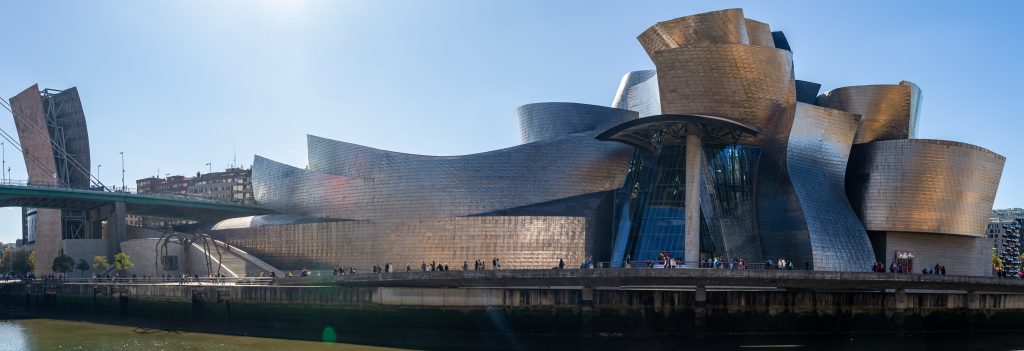
Illustration 1 Photo by David Vives in Unsplash
Situated at the northern end of the city centre, the Guggenheim Museum Bilbao stretches across land that surrounds the Nervión estuary and extends towards La Salve bridge. The museum’s excellent location means it’s easily accessible from the city.
The project is grandiose in structural complexity with its load-bearing walls and ceilings. These are created with a series of metallic grids and triangulations. As such, they form a single structural body devoid of flat surfaces. Moreover, the whole is covered with an imposing skin of titanium and glass. It is this titanium, consisting of over 30,000 half-millimetre-thick pieces, that makes the building visually astonishing. This material was hugely successful in conveying the significance of the project. With its magical reflections, the titanium displays flashes of gold, mirroring the surrounding water.
Glass is placed subtly in some parts of the structure to respect an interior where world-renowned art thrives.
However, other materials also play a significant part, such as the limestone in the more classical areas of the building.
Shots, morphology and emotions from outside the Guggenheim
It may be obvious that the Guggenheim stands out aesthetically for its spectacular sculptural play across a 24,000 m2 surface, where materials intertwine with different visual languages, providing a carefully thought-out composition that evokes very different emotions in each of its surfaces.
From above, it seems to bloom and mesh in a shape that on the ground resembles an enormous ship on the Nervión. As such it pays homage to the port city. With its markedly organic form permitting movement of the architectural ensemble, the Guggenheim’s titanium skin manages to evoke emotions.
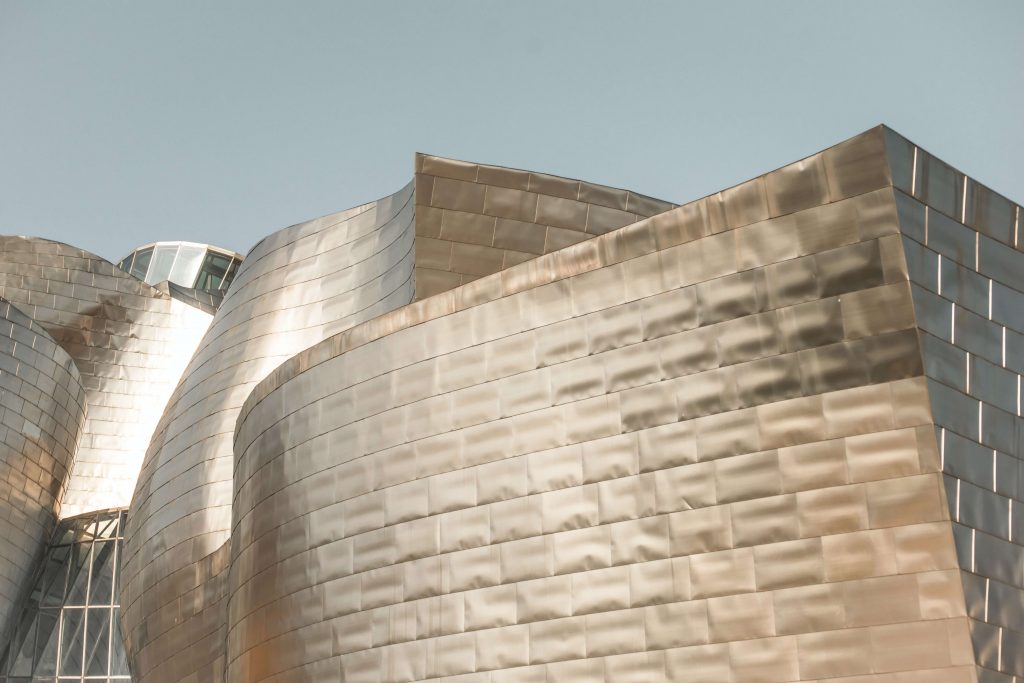
Illustration 2 Photo by elCarito in Unsplash
Titanium was used by chance. Initially, steel was chosen for the material covering the moving structure. However, steel lacked the dreamlike qualities imbued by reflection. Aluminium was tried for visual effect that would enhance the space in the project location. Yet after several tests, Gehry stumbled on titanium. This material is perfect for Bilbao’s climate. Not only that, but it constantly reflects a special sentiment that connects to the language of light. A language marked by the contrasts, light and shadows of the structure itself. Its organic compositions differ on every plane. Even so, the views, reflections and feelings that the luminous effects engender seem astonishing to viewers and passers-by.
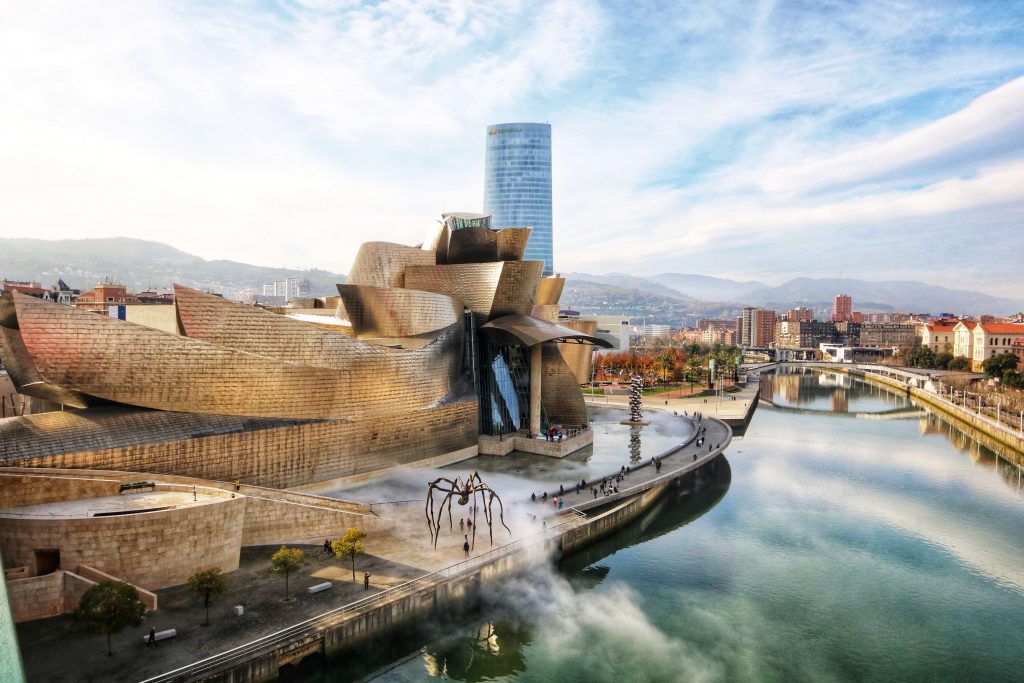
Illustration 3 Photo by Jorge Fernández Salas in Unsplash
Visitors tour the entire perimeter of the building and admire the sculptures that are evidence of the significance of this important artistic foundation. The exterior acts as an extension of the exhibition space, displaying fantastic pieces. Works that have been created by artists such as Louise Bourgeois, Eduardo Chillida, Yves Klein, Jeff Koons and Fujiko Nakaya.
Transparency through the Guggenheim’s internal curve
Inside Gehry’s iconic project, the Canadian’s architectural style is highlighted in a layout dominated by an imposing 50-metre-high Atrium. This area also acts as an exhibition space, and is the building core from which the 20 museum rooms radiate. Clarity is shaped by this central space, distributed through curved volumes and perspectives. This serves to establish a dialogue with the external structure of the museum. The positioning of the glass, as mentioned before, immerses the Atrium in a halo of delicate, natural light.
Accordingly, Frank Gehry’s sinuous curves rather than overwhelm, are designed to evoke an enduring sense of calm for visitors as they pass through, taking in the exhibition.
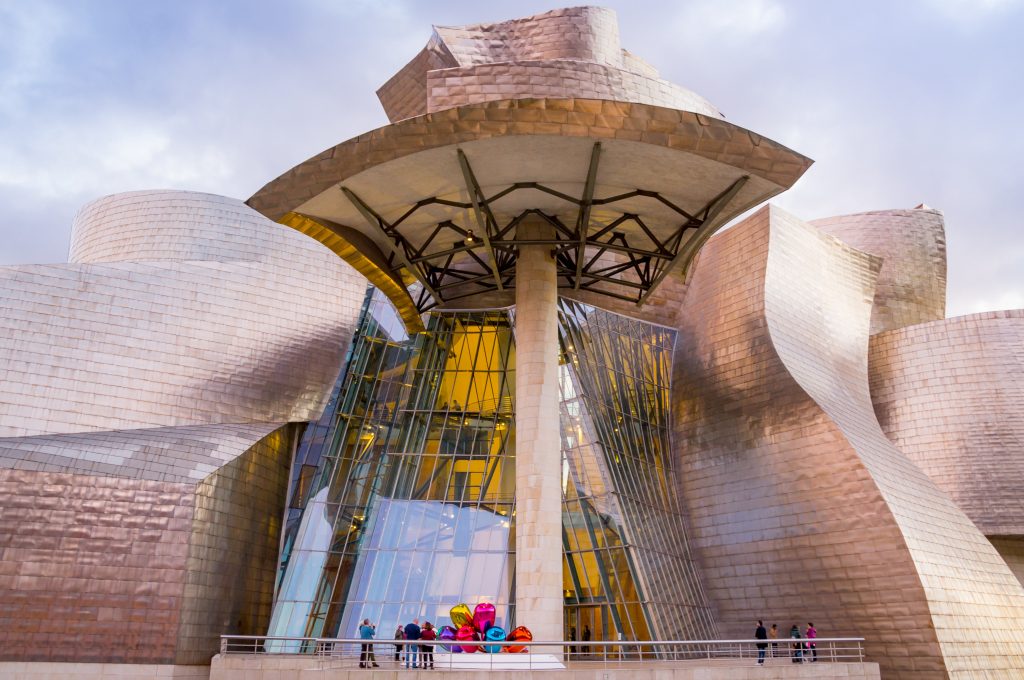
Illustration 4 Photo by Piotr Musioł in Unsplash
Regarding the exhibition rooms, which have skylights that provide pleasant overhead lighting, it’s worth mentioning the importance of the so-called Fish Gallery: an area that makes reference to the submerged part of the Guggenheim that is connected to La Salve bridge. With its fish-like form, the structure hints at the marine world. Furthermore, metaphorically the building surrounds, submerges and rises on the waters of the estuary.
Frank Gehry and architectural deconstructivism
Frank Gehry demonstrated his expertise in designing large-scale projects with the Guggenheim Bilbao; a morphological play through volume that can be seen across Gehry’s different architectural projects.
A deconstruction in which cubes are crossed through curves, resulting in an excellent dialogue of contrasts. An example of what the Guggenheim Bilbao meant for the rest of the world is the influence it had on the construction of the Walt Disney Concert Hall, Los Angeles (1999-2003), which Gehry designed using similar morphology and material to the Guggenheim.
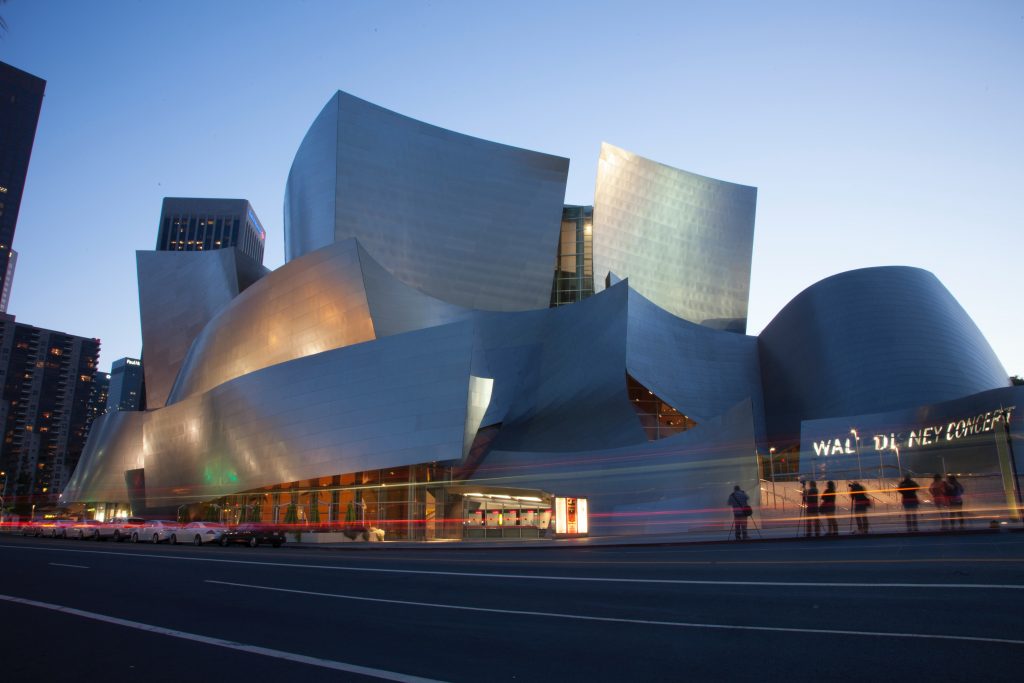
Illustration 5 Walt Disney Concert Hall / Photo Linda Pomerantz Zhang in Unsplash
The deconstructivist movement in architecture began in the 1980s and involved a liberation from right angles, geometric purity and ornamentation. It was strongly influenced by the Bauhaus school and its philosophy has spread to the present day, resulting in great examples of contemporary architecture such as the projects led by the studios of Zaha Hadid, Daniel Libeskind and Michael Holzer, among others.
It’s clear that the opening of the Guggenheim in Bilbao consolidated Frank Gehry’s architectural work and provided the city with a catalyst for a new era. The same will be the case with Gehry’s proposal for the Guggenheim Abu Dhabi in 2025. The world’s largest Guggenheim museum, which, together with other projects by leading architects, will form a new artistic and cultural landscape in the United Arab Emirates’ capital.

